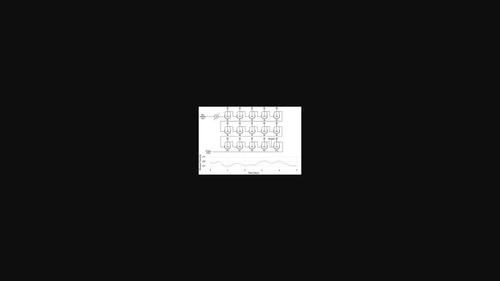苯乙烯/1,3-丁二烯橡胶 (SBR) 冷乳液共聚工艺的数字双胞胎
IF 16.4
1区 化学
Q1 CHEMISTRY, MULTIDISCIPLINARY
引用次数: 0
摘要
在全球生产的所有合成橡胶中,苯乙烯/1,3-丁二烯橡胶(SBR)是使用最广泛的弹性体,为描述生产该橡胶的乳液共聚过程而开发精确、稳健的动态模型,是实施监测、先进控制和优化策略的基础。关于丁苯橡胶乳液共聚的动态建模已有多项研究,但大多数研究都集中在热条件下,或者像冷条件下那样只有一个半间歇反应器。因此,本研究将重点放在 SBR 冷乳液共聚过程的动态建模上,考虑到一列由 15 个连续搅拌罐反应器组成的反应器,就像许多实际工业现场一样。所开发的动态模型通过使用数字孪生(DT)概念来实现,包括在线读取过程变量和在线调整部分模型参数的自适应策略,同时对反应器组中反应器数量的实时变化的影响也很敏感,这是以前一直被忽视的问题,但在工厂现场却很重要。DT 监测实际工业过程的实际应用说明了所开发工具的鲁棒性和准确性,使其有助于及时发现过程异常,并为未来的先进控制策略开辟了道路。本文受版权保护。本文章由计算机程序翻译,如有差异,请以英文原文为准。

Digital Twin for The Styrene/1,3‐Butadiene Rubber (SBR) Cold Emulsion Copolymerization Process
Development of accurate and robust dynamic models for description of emulsion copolymerization processes used for production of styrene/1,3‐butadiene rubber (SBR), the most widely used elastomer among all the synthetic rubbers produced globally, is fundamental for implementation of monitoring, advanced control, and optimization strategies. There are several studies on dynamic modeling of SBR emulsion copolymerization, but most of them focus on hot conditions or only one semibatch reactor, as in the case of cold conditions. For this reason, the present study focuses on dynamic modeling of SBR cold emulsion copolymerization processes considering a train of 15 continuous stirred tank reactors, as in many real industrial sites. The developed dynamic model is implemented by using the Digital Twin (DT) concept, that involves the online reading of process variables and an adaptive strategy for online tuning of some of the model parameters, being also sensitive to the effect of real‐time changes to the number of reactors in the train, a subject that has been overlooked previously, but which is important at plant site. The practical application of the DT for monitoring a real industrial process illustrates the robustness and accuracy of the developed tool, making it useful for opportune detection of process anomalies and opening the way for future advanced control strategies.This article is protected by copyright. All rights reserved
求助全文
通过发布文献求助,成功后即可免费获取论文全文。
去求助
来源期刊

Accounts of Chemical Research
化学-化学综合
CiteScore
31.40
自引率
1.10%
发文量
312
审稿时长
2 months
期刊介绍:
Accounts of Chemical Research presents short, concise and critical articles offering easy-to-read overviews of basic research and applications in all areas of chemistry and biochemistry. These short reviews focus on research from the author’s own laboratory and are designed to teach the reader about a research project. In addition, Accounts of Chemical Research publishes commentaries that give an informed opinion on a current research problem. Special Issues online are devoted to a single topic of unusual activity and significance.
Accounts of Chemical Research replaces the traditional article abstract with an article "Conspectus." These entries synopsize the research affording the reader a closer look at the content and significance of an article. Through this provision of a more detailed description of the article contents, the Conspectus enhances the article's discoverability by search engines and the exposure for the research.
 求助内容:
求助内容: 应助结果提醒方式:
应助结果提醒方式:


